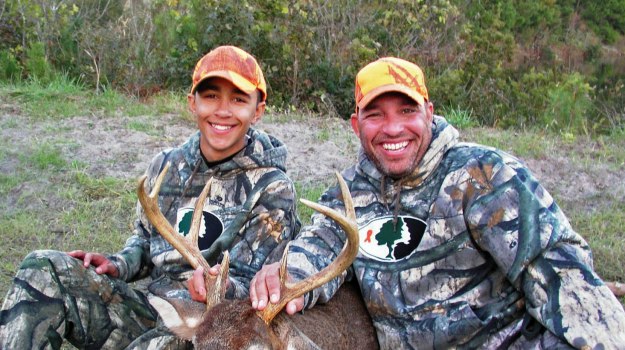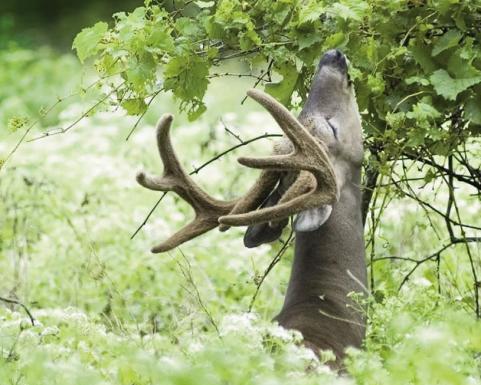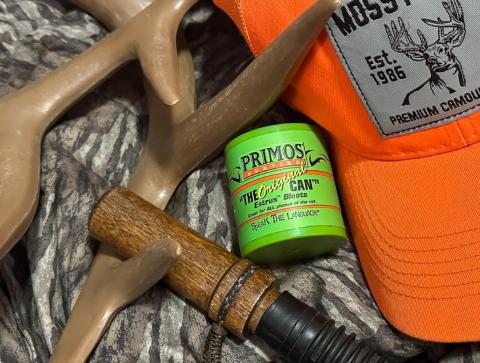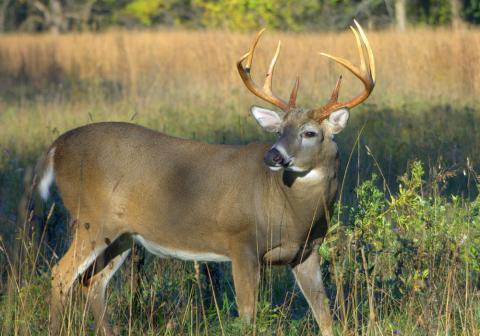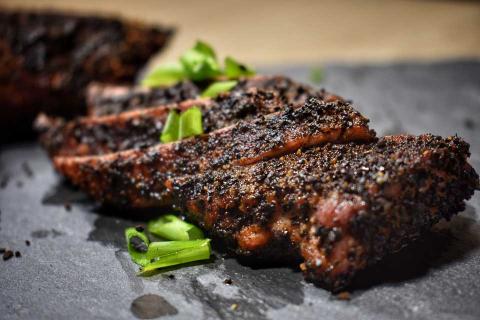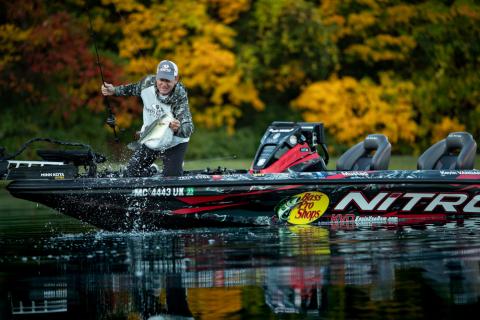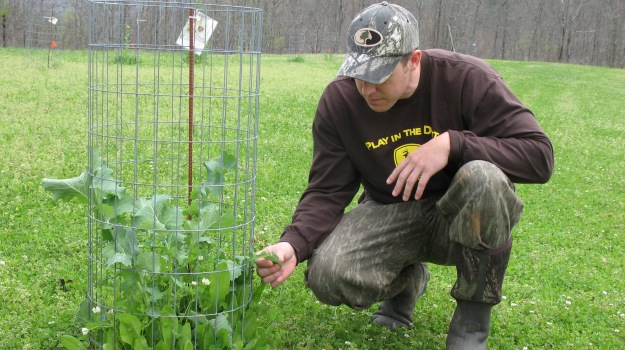
Should you be planting annuals and perennials together?
By Todd Amenrud
We (BioLogic) have done a great job at confusing some people about a couple of the products we make. We have two blends (Premium Perennial and Perfect Plot) that contain both, perennials and annuals. I used to ask my boss – “Why do we call it Premium “Perennial” when 30% of the blend is made up, of annuals?” In the south, because perennials are planted during the fall, the name makes sense because the premium annual brassicas in the blend put the finishing touch on a perfectly designed perennial base. But in the north, we Yankees have got some decisions to make about how to manage the plot. Should people plant these blends? If so, how do you care for them and what about the annuals…how do you get them back after the first year? Are these annual / perennial fusions right for your food plot plan?
 Much will depend upon your location, north or south. In the south, because both annuals and perennials can be planted during the late summer and fall, these can be ideal plantings. In the north, if you have enough acreage to devote, I would rather plant my annuals separate from my perennials. Think about these reasons; perennials should be planted in the spring in the north and the types of annuals in these blends (brassicas) are traditionally planted during the late summer. You’ll want to mow your perennials several times during the growing season? But you don’t want to mow your brassicas. Both of these products are mixes of different perennials like clovers, chicory and alfalfa, combined with varieties of annual brassicas. Normally I prefer to plant my perennials (Clover Plus or Sudden Impact) separately from my brassicas (Maximum or Winter Bulbs & Sugar Beets). I believe if they are planted separately they are much easier to care for and you’ll get a better yield out of each. But…
Much will depend upon your location, north or south. In the south, because both annuals and perennials can be planted during the late summer and fall, these can be ideal plantings. In the north, if you have enough acreage to devote, I would rather plant my annuals separate from my perennials. Think about these reasons; perennials should be planted in the spring in the north and the types of annuals in these blends (brassicas) are traditionally planted during the late summer. You’ll want to mow your perennials several times during the growing season? But you don’t want to mow your brassicas. Both of these products are mixes of different perennials like clovers, chicory and alfalfa, combined with varieties of annual brassicas. Normally I prefer to plant my perennials (Clover Plus or Sudden Impact) separately from my brassicas (Maximum or Winter Bulbs & Sugar Beets). I believe if they are planted separately they are much easier to care for and you’ll get a better yield out of each. But…
It depends upon how much acreage you’re devoting. Even in the north if you have limited acreage to devote to food plots or one of these blends may be your best choice. Under certain specific planting conditions they can also make the perfect choice because they really do deliver a wide range of returns. If you have limited acreage to devote to food plots Perfect Plot or Premium Perennial give you the benefits of both, the tonnage producing, highly attractive annuals and the nutritious, dependable, low-maintenance perennials. They can also work great if you are trying to establish a perennial clover and chicory plot in a dry area. The big, leafy, annual brassicas shoot up fast and shade the topsoil to conserve moisture which is the key determinant for success in getting perennials started.
The problem with planting one of these blends in the north with good growing conditions – if you plant it and leave it the brassicas tend to shade out your perennials and you end up with a great plot of annual brassicas, but spotty perennial re-growth the following spring. It is possible, and easy enough to over-seed or frost-seed with more perennials the following spring. But then I would question, why didn’t you just plant Clover Plus to begin with?
On the properties that I oversee I do not plant these blends as often as I plant perennials separate from my annuals because I like to care for each individually. For a healthy stand of perennials, mowing is important. In these two blends, unless I’m specifically trying to manage for one of the situations talked about below, I don’t want to mow my brassicas down. Brassicas are very browse-tolerant and will withstand clipping as long as you don’t chop them too short. However, one of the great characteristics of the brassica is the unbelievable tonnage they provide. If you mow them you are defeating that purpose. Without the different types of plants competing against one another you’ll also get a better yield out of each and I can also be more specific with fertilizer applications and selective herbicides best for each type of planting.
When explaining Premium Perennial to people so that they understand the combination of annuals and perennials, I’ve always said, “If you take 30% Maximum (brassicas) and Mix it with 70% Clover Plus (perennial clover and chicory) it will get you a blend similar to Premium Perennial. The specific cultivars would be somewhat different, but that’s kind of the idea.” It’s those “specific cultivars,” both brassicas and perennials that give you a solid reason to still plant these blends in the north.
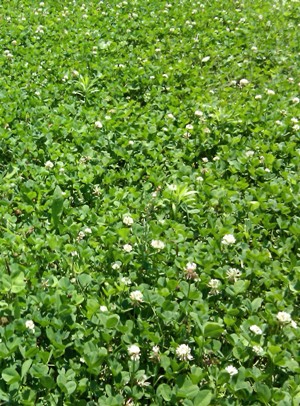 In my opinion, Clover Plus is our best perennial blend…it’s the best perennial blend I’ve ever seen - period. However, both Perfect Plot and Premium Perennial contain specific perennial cultivars that are different from Clover Plus and specific brassica cultivars that are different from Maximum or Winter Bulbs & Sugar Beets, so there are still great reasons other than those mentioned above to plant these blends in the north. The look, the production, the palatability timeframes and other characteristics are different with the perennials in these two blends when compared to Clover Plus. With enough acreage to devote I like to have all of the above planted.
In my opinion, Clover Plus is our best perennial blend…it’s the best perennial blend I’ve ever seen - period. However, both Perfect Plot and Premium Perennial contain specific perennial cultivars that are different from Clover Plus and specific brassica cultivars that are different from Maximum or Winter Bulbs & Sugar Beets, so there are still great reasons other than those mentioned above to plant these blends in the north. The look, the production, the palatability timeframes and other characteristics are different with the perennials in these two blends when compared to Clover Plus. With enough acreage to devote I like to have all of the above planted.
When planting Perfect Plot or Premium Perennial in the north and managing for the perennials, I would suggest planting them in the spring when you would normally plant perennials (first week of May is typical here in Central Minnesota), but then managing them just like your other perennials. Mowing will be critical for good stolon production out of the clovers to promote a thick stand of perennials. It may seem like a waste to mow the brassicas, but in the north you’ll have to decide what is more important to you, the annual brassicas or the perennials. The brassica is such a hardy plant that you will likely still have significant brassicas growth; they’ll just be shorter and bushier, but the mowing will allow the sunlight to bring your perennials along as well.
Planting time is important for Perfect Plot or Premium Perennial. Again, perennials should be planted in the north during the spring and brassicas are traditionally planted during the late summer. So in the north you want to plant them early enough so you can still take advantage of good topsoil moisture and late enough so that the brassicas don’t have too long to grow otherwise they bolt to flower and seed. In states in the transitional zone like Missouri, and Pennsylvania you’ll be better off planting these two blends during the late summer and making sure you give enough time for the perennials to establish their root systems - typically 45 to as long as 60 days before your average annual first frost.
In the south these blends are often treated as annuals and replanted every year. In some areas of the south because the hot, dry summers will cause the perennials to go dormant and often die, these blends will be planted each September.
After the first year what happens to the brassicas? Obviously, being annuals, they won’t come back, but you can add them back. You may over-seed brassicas into any perennial stand or add them back to one of these two blends after their first winter kills them off. Simply mow your perennials so that the brassica seeds don’t get hung up in the perennial leaves, and broadcast the brassica seeds right over your perennials. It is suggested that you then go over the plot with a roller, or a type of cultipacker that won’t hurt your perennial’s roots, to ensure good brassica seed contact with the soil. Some people like to plant before a rain and say that the rain helps “plant” the seeds. It would depend upon the type of soil that you have, but I believe when over-seeding that it is important to do something to ensure good seed-to-soil contact. This way you can add back the annual brassicas to the plot each year if you wish.
In the south these blends can provide much - they are great late season attraction and possibly the best wintertime nutrition you can come by. In the north, you have some decisions to make on how you wish to manage them or whether you want to plant your annuals separate from your perennials. With the selection of different varieties of plants in these blends, they are clearly more diverse than any other single blend and in small acreage situations these can be the way to go.
With ample acreage to devote you may wish to plant your annuals and perennials separate from one another. If you are trying to establish perennials in a sandy area, one of these blends can function impeccably. If you have limited acreage to devote to plots, or if you are a “first-timer” and are only going to plant one thing, these two blends cover a number of angles.















